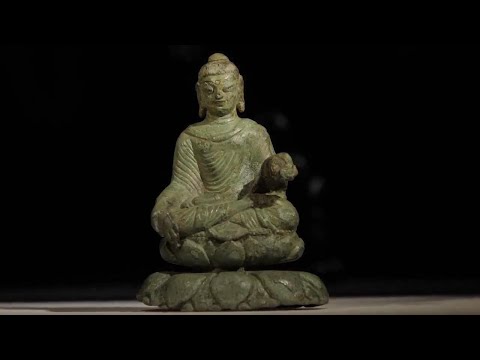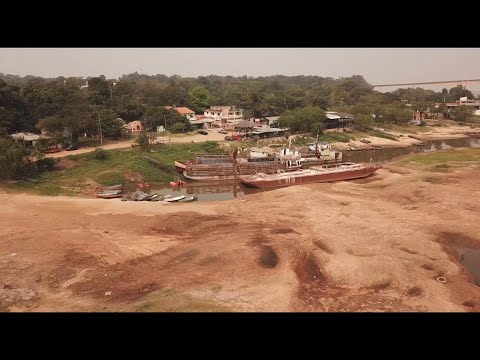(24 Sep 2024)
UK SILK ROADS
SOURCE: ASSOCIATED PRESS
RESTRICTION SUMMARY:
LENGTH: 6:57
ASSOCIATED PRESS
London, UK – 24 September 2024
1. Various of glazed ceramic Bactrian camel from Tang Dynasty (618-907AD) with silks, and monster masks on its back
2. Various of bronze figure of Buddha made in the Swat Valley, Pakistan in late 500s AD and discovered on Swedish island of Helgo (5000 km away)
3. Wide of Silk Roads exhibition room
4. Pan right of names of cities connected by the Silk Road
5. Wide of display case containing Buddha figures with video display in background
6. Various set up shots of Sue Brunning
7. SOUNDBITE: (English) Sue Brunning, curator of European Early Medieval Collections, The British Museum
"People might be used to an idea of the Silk Road as a single trade route between east and west. But in this exhibition we’re presenting a rather different vision of that. And that we’re calling it Silk Roads, plural. And the plural is important because we’re presenting it rather as a network of overlapping routes that linked communities across Asia, Africa and Europe in all directions, not just by land, but also by river and sea."
8. Various of jade gold necklace from early 500s AD discovered in Gyeongju, Korea
9. Close of ivory chess pieces excavated from Samarkand and thought to be from 700s AD, the oldest chess set known to date
10. Close of ivory container from Aachen, Germany early 800s AD – possibly made from the tusk of the Emperor Charlemagne’s pet elephant Abu-al-Abbas
11. Various of The Franks Casket made from whale bone made in Northumbria, UK in early 700s AD – the runic inscription on the front commemorates the whale who supplied the bones
12. Various of mural from the Hall of the Ambassadors in Samarkand, Uzbekistan showing funeral procession of Sogdian ruler Varkhuman (660AD) showing figures from India, China and the Korean peninsula
13. SOUNDBITE: (English) Sue Brunning, curator of European Early Medieval Collections, The British Museum
"One of the most spectacular loans that we have on display in the exhibition is this fantastic wall painting, which is on loan to the UK for the very first time from our partners in Uzbekistan. And this is a wall painting that is associated with a group known as the Sogdians, who were great traders along the Silk Roads at this time, moving very vast distances. We have traces of them, for example, from China into India and the Middle East. And this wall painting shows a procession which includes the camels, which you might expect to see in a Silk Road show, but also elephants and people from across different parts of the world who are all processing to an ancestral tomb in the Sogdian’s heartland of Sogdiana and the capital at Samarkand is where this spectacular object came from. So we’re very pleased to have it on display, and I think it will be extremely popular with visitors and hopefully bring this group of people to a wider audience."
14. Wide of visitors looking at display
15. Wide of Silk Roads exhibition space
16. Various of gold shoulder clasps from Sutton Hoo, UK showing gemstones from Czechia, Sri Lanka and India (late 500s AD – early 600s)
17. SOUNDBITE: (English) Sue Brunning, curator of European Early Medieval Collections, The British Museum
18. Close of clasp from Sutton Hoo, pull focus
19. Various set up shots of Luk Yu-Ping looking at ‘Silk princess’ votive panel from Khotan, China from 600-700AD
20. SOUNDBITE: (English) Luk Yu-Ping, curator of Chinese Paintings, Prints and Central Asian Collections, The British Museum
21. Various details of ‘Silk Princess’ votive panel
Find out more about AP Archive: http://www.aparchive.com/HowWeWork
Twitter: https://twitter.com/AP_Archive
Facebook: https://www.facebook.com/APArchives
Instagram: https://www.instagram.com/APNews/
You can license this story through AP Archive: http://www.aparchive.com/metadata/youtube/51d3787a70af45b89d9147b5c641a75e
Author: AP Archive
Go to Source
News post in September 29, 2024, 3:04 pm.
Visit Our Sponsor’s:
News Post In – News





